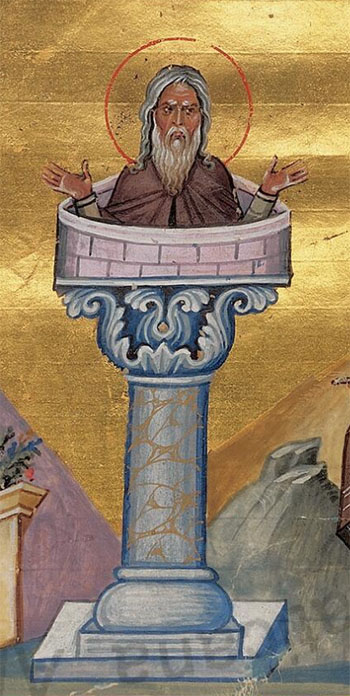
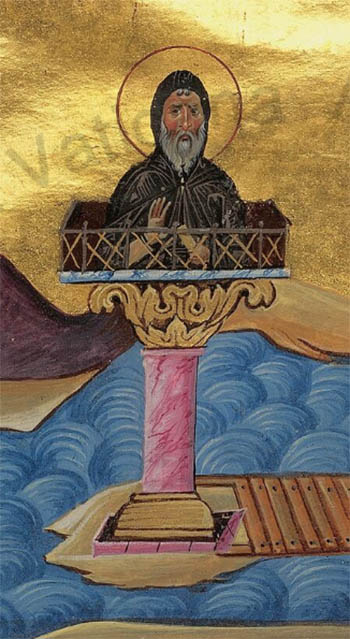
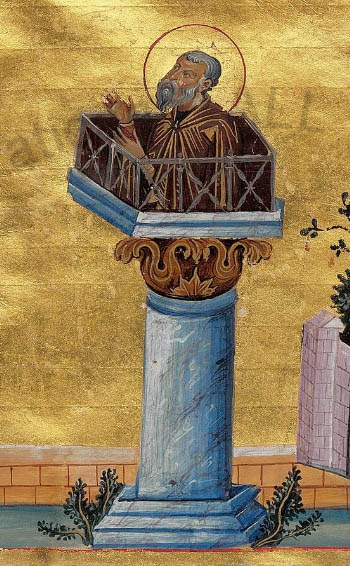
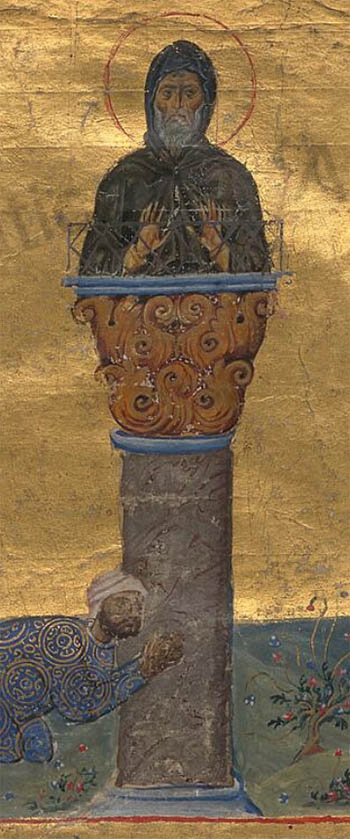

The Fires of the Fourth Crusade in Constantinople 1203-1204
a damage assessment
T. F. Madden - Champagne-Urbana
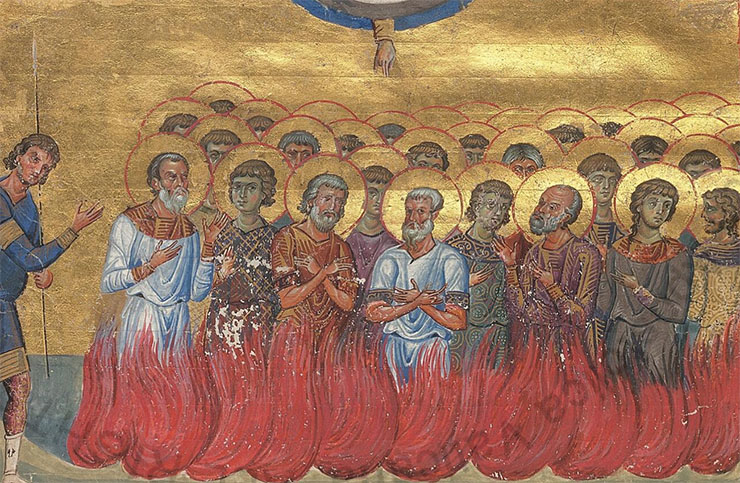 Looking back on the fall of Constantinople in 1204, Nicetas Choniates declared, "Thus it was that Constantine's fair city, the common delight and boast of all nations was laid waste by fire and blackened by soot, taken and emptied of all wealth, public and private, as well as that which was consecrated to God..." Convinced that Byzantine sins were ultimately to blame for the capital's ruin, Nicetas elsewhere compared the fires which devastated the city before its capture to the flames which destroyed Sodom and Gomorrah, and judged the former "far more drastic." Fire was not an uncommon hazard in a city as tightly packed with wooden structures as Constantinople. But no previous blaze could compare with the three infernos set by the Latin crusaders during their protracted stay on the Bosporus in 1203 and 1204. They were the first of Constantinople's assailants able to exploit the city's inflammability as a means of its conquest.lt is the purpose of this study to attempt to describe, map out, and assess the devastation which the Fourth Crusade's pyrotechnic strategies visited on the great city before its fall. In each case, the fire's ignition and spread will be analyzed; the latter by identifying structures which were destroyed as well as those nearby which were not. More speculative is an assessment of the human costs of the fires. But these can be estimated based on the scope of devastation, population density, and comparative data from similar, yet better documented, catastrophes. Beyond the elucidation of an important element in the histories of both the Fourth Crusade and the Byzantine capital, I hope this study will assist and prompt future research into the mechanics of Constantinople's seemingly incongruous surrender in 1204 to a relatively small, fractious, and poorly supplied Latin force. This is a neglected area of study in otherwise extensive work on the Fourth Crusade.
Looking back on the fall of Constantinople in 1204, Nicetas Choniates declared, "Thus it was that Constantine's fair city, the common delight and boast of all nations was laid waste by fire and blackened by soot, taken and emptied of all wealth, public and private, as well as that which was consecrated to God..." Convinced that Byzantine sins were ultimately to blame for the capital's ruin, Nicetas elsewhere compared the fires which devastated the city before its capture to the flames which destroyed Sodom and Gomorrah, and judged the former "far more drastic." Fire was not an uncommon hazard in a city as tightly packed with wooden structures as Constantinople. But no previous blaze could compare with the three infernos set by the Latin crusaders during their protracted stay on the Bosporus in 1203 and 1204. They were the first of Constantinople's assailants able to exploit the city's inflammability as a means of its conquest.lt is the purpose of this study to attempt to describe, map out, and assess the devastation which the Fourth Crusade's pyrotechnic strategies visited on the great city before its fall. In each case, the fire's ignition and spread will be analyzed; the latter by identifying structures which were destroyed as well as those nearby which were not. More speculative is an assessment of the human costs of the fires. But these can be estimated based on the scope of devastation, population density, and comparative data from similar, yet better documented, catastrophes. Beyond the elucidation of an important element in the histories of both the Fourth Crusade and the Byzantine capital, I hope this study will assist and prompt future research into the mechanics of Constantinople's seemingly incongruous surrender in 1204 to a relatively small, fractious, and poorly supplied Latin force. This is a neglected area of study in otherwise extensive work on the Fourth Crusade.
The First Fire: 17-18 July 1203 (Table I)
The first fire was set by Venetian crusaders on 17 July 1203 during the assault to put young Alexius on the throne. After capturing a large portion of the Golden Hom wall, the Venetians probably began moving into the city itself, but were forced back by fierce Byzantine resistance. To cover their escape, the Italians put a number of buildings to the torch. The same strong winds which drove the Republic of St. Mark's galleys onto the shore of Constantinople also fanned their small tactical fire into a massive and uncontrollable blaze. It spread quickly, destroying everything it touched. Residents in the area fled for their lives.
The Venetians concentrated their attack near the Petrion Gate and, after capturing one tower, quickly spread out across a good part of the defensive works. Their ships were still docked close to the gate so, when the time came, they naturally retreated to it. The ignition of the first fire, then, probably occurred very near there.
According to Nicetas, the blaze reduced to ashes everything between the hill of Blachernae and the Monastery of Evergetes, extending into the city as far as the district of Deuteron. Crusader sources, obviously less familiar with the city's topography, provide no additional detail, although Robert de Clari did claim that the destroyed region was the size of Arras. Evergetes cloister is generally considered to have been associated with the church today called Gull Camii. It lies a short distance west-southwest of Petrion Gate (Petrikapl). If the fire were indeed set near Petrion Gate, then the easterly winds which fueled the Venetian seaborne assault would have driven the conflagration into the area Nicetas described. Indeed, with few exceptions, there are no structures in that general area today which can positively be identified as predating the catastrophe.
Despite its course, the fire did not consume Pammakaristos monastery, which lay almost due east of Petrion Gate. This is important since one would expect the monastery to have been among the first casualties. Its survival must be attributed in large measure to its elevation high above the fire. That the blaze halted at Blachernae Hill suggests that the winds, while powerful, were not sufficiently strong to drive the fire up a very steep slope. From Petrion Gate, then, the flames consumed residences and churches on the lower ground along the wall and then made their way to Deuteron across the milder grade between Pammakaristos' hill (part of the Fifth Hill) and Blachernae hill, in the Petra valley between the two. This explains Nicetas' description of the devastation, the destruction of Odalar Camii (Table I), and the survival of Pammakaristos. The last may also have been helped by its cistern from which monks could rush water to the encroaching fire below. Similarly, the great open cistern of Aetius to the west undoubtedly was responsible for halting the fire's progress at Deuteron and saving the Monastery of Prodromos and the Convent of St. Nicholas.
After one day the fire subsided and its last embers were extinguished. Approximately 125 acres (50.5 ha.) were reduced to rubble. The devastation would later prove useful to the Latins. When they entered the city on 12 April 1204 the main body of the crusader forces pitched their tents in the "great open space" which the Venetians had cleared with their fire the previous July. Protected from street fighting and guerrilla raids, the Latins planned to hold and defend the burned region, accepting battle only there. In fact, if the Byzantines refused combat, the crusaders planned to increase the open space by again setting the city ablaze. The Frankish form of warfare required wide, clear areas which their fires provided for them.
The Second Fire: 19-20 August 1203 (Table II)
Around, or probably on 18 August 1203 a Byzantine mob, in a frenzy of anti-Latin hatred, descended on the Latin quarters along the Golden Horn. Nicetas bitterly condemned the "city rabble" who "senselessly razed and reduced to ashes the dwellings of the Western nations ... making no distinction between friend and foe." The friends were the Almafitians and the Pisans, many of whom fled the carnage and joined the crusading host in Galata. The foes, obviously, were the Venetians. While locally damaging these small fires did not rage out of control. They were probably confined to individual shops, houses, or small neighborhoods. Despite their seething frustration, the Byzantine arsonists took care to avoid spreading flames which might destroy their own homes.
On the following day, 19 August, a group of armed Flemings, Pisans, and Venetians crossed the Golden Horn on fishing boats and descended on a seaside mosque. The Moslem worshippers fought back, calling also to their Byzantine neighbors for assistance. The western looting party retreated but, according to Nicetas, used fire to cover their escape. An ill wind from the north whipped the flames into a roaring and deadly inferno. According to Nicetas, the tire raged for two days and two nights. Villehardouin, watching from Galata, recorded that the fire lasted eight days. Both are probably correct. Nicetas may have been referring to the great fire which swept so quickly through the city, while Villehardouin was recording the duration of fires he witnessed still raging in the city on following days. The Great Fire of London in 1666, which bears many similarities to the second fire in Constantinople, burned for a little over three days. On the fourth day falling winds starved the monolithic inferno, but were sufficient to keep localized fires burning. Witnesses across the Thames, never the less, still marveled at the awesome fire, especially at night when it lit up the sky. But those inside the city knew that it was waning. The London fire still smoldered and occasionally erupted for weeks after it was officially extinguished.
Nicetas vividly described the flames of the second fire which "rose unbelievably high above the ground" spreading everywhere. "While in the past many conflagrations had taken place in the City ...," he continued, "the fires ignited at this time proved all the others to be but sparks." The shifting winds urged the fire first one direction and then another. Like a river it broke into tributaries and then reconverged upon itself. Columns, statues, great structures "went up in smoke like so much brushwood." "Nothing," Nicetas lamented, "could stand before those flames." The crusaders across the Golden Horn also looked on the deadly blaze in awe and sorrow. Geoffrey de Villehardouin recorded that the barons "were extremely grieved and filled with pity, seeing the great churches and the rich palaces melting and collapsing, and the great streets filled with merchandise burning in the flames, but they could do nothing."
According to Nicetas, tile "first kindling" of the second fire was the mosque of the 'Agarenes' called 'Mitaton' in popular speech." He later described the mosque as "situated in the northern section of the City sloping toward the sea next to the church built in the name of Hagia Eirene." This mosque was one of Constantinople's newest. Sometime before his deposition in 1195, Isaac II Angelus erected the worship place as a gesture to Saladin. Nicetas carefully distinguished this mosque from other situated further west in the Moslem quarter by identifying its neighbor, Hagia Eirene Nicetas was not referring to the famous church of that name near Hagia Sophia, as some have stated, but rather "Hagia Eirene by the sea," located on the shore of the Golden Horn.
The original church was built in the fifth century, outside the city walls. In fact, it stood so close to the water' s edge that waves often washed through the church doors. After it later burned down, it was partially rebuilt by Manuel Comnenus a few decades before the Fourth Crusade arrived. The new building was erected on a quay to avoid water damage. It seems to have remained unfinished in 1203. The Perama district lay between modern Bahkpazar and Odunkapi. We know from a reference to the church in 1136 that the structure was in the Pisan quarter. Since Perama and the Pisan quarter overlapped only at the far eastern edge of the former and western edge of the latter, Hagia Eirene by the sea must have stood there. The neigboring "Mitaton" mosque, then, was outside the city walls, either in Perama, the Pisan quarter, or (more probably) both. It likely stood not far from modern Yeni Valide Camii.
There the mosque was plainly visible to the Latins on the opposite shore, conspicuously lacking any substantive defenses. The temptation to plunder it must have been great for angry and frustrated crusaders anxious to prove their worth against Moslems.
With one exception, historians of the Fourth Crusade who describe in any detail the "first kindling" of the second fire misplace it. Donald E. Queller and Donald M. Nicol, assume that the destroyed mosque was one of those in Constantinople's Moslem quarter, situated further up the Golden Horn. The error leads them to transform the plundering of one seaside mosque into the pillaging of an Islamic neighborhood. Charles Brand simply puts the mosque, rather ambiguously, "midway between Blachernai and the Bosporus," which is probably also a reference to the Moslem quarter. Although Edwin Pears' reasoning was flawed, he nevertheless came closer, putting the structure in the Pisan quarter. Taking Nicetas' reference to Hagia Eirene to mean the church adjacent to Hagia Sophia rather than its namesake in Perama, he placed the mosque between Hagia Eirene and the sea, instead of near Hagia Eirene by the sea. This puts the building deep within the Pisan quarter rather than on its outskirts, where it belongs. More recently, John Godfrey, probably using Pears and Nicetas (his footnotes are inadequate), described the mosque as resting on the shore of the Pisan quarter. While this lacks reference to Perama, it is essentially correct.
According to the Devastatio, the expedition's goal was to aid Latin residents in the city who were under Greek attack the day before. Most of the refugees had already fled to Galata. We must remember that after the second fire devastated the great city a heavy mantle of guilt descended on many of the crusaders. Villehardouin described the great sorrow and pity which filled the leaders' hearts. Fellow crusader Raimbaut de Vaqueiras was still reminding Baldwin of Flanders that "he and we alike bear guilt for the burning of churches and palaces." He implored the new emperor to press on to the Holy Land lest "our guilt before God ... be greater still." As men do, some eased their consciences by blaming their victims. Greek persecutions, they reasoned, forced the chivalric warriors to set the city ablaze. So great was the desire to sanitize the events leading up to the great fire, that no Latin source even alludes to the raid on the small mosque. The crusaders understandably wanted to forget the embarrassing little incident from which so much misery would flow. According to Villehardouin, the second fire poisoned relations between the Franks and Greeks "for neither side knew on whom to cast the blame for the fire; and this rankled in men's heart on both sides." The Devastatio provides one, probably the most popular, excuse for the crusaders' complicity in the ignition of the second fire inside a city they had been contracted to protect. There is no reason to doubt that the author of the Devastatio sincerely believed the story he reported, but we should not. Certainly Raimbaut and Villehardouin did not fully accepted the whitewash. Angered and embarrassed by the tragedy, the Marshal of Champaign affirmed that he did not know the men who set the second fire, but that they did so "out of malice."
According to Nicetas, the second fire spread quickly through Constantinople's most populous regions. In northern Constantinople, the fire reached only to nearby Perama, but in the southern regions it would stretch all the way to the district of Eleutherius. To the south the inferno continued until it "expended its fury" on the mighty sea walls of Marmara. Nicetas repeatedly remarked on the erratic behavior of the fire, zig-zagging across the dense mid-city: sparing some buildings, destroying those next door, then turning again on the survivors. The fire was so great that it often hurled burning embers across the sky, some landing in other areas of the city, one destroying a ship sailing down the Bosporus. Nicetas, Villehardouin, and the Chronicle of Novgorod all noted how close the flames came to Hagia Sophia. Nicetas reported that "all the buildings lying in the direction of the Arch of the Milion and adjoining the gallery of Makron and the structure also called The Synods came crashing to the ground ..." What buildings Nicetas was referring to is unclear. What is certain is that he did not mean to include the Milion itself, nor the gallery of Makron, nor probably the "Synods" among the structural casualties. The famous Byzantine milestone and the gallery of Makron (a portion of the patriarchal palace complex bordering the Augusteion) survived until the Ottoman period. The identification of the "Synods" is more problematic. Guilland has suggested that it was another name for the Thomaites, a large building originally added to the patriarchal palace by Thomas I (607-610) and later rebuilt after it burned down near the end of the eighth century. It probably stood on the northwest corner of the Augusteion. The patriarchal complex stretched all along that court on its north side, adjacent to the south facade of Hagia Sophia. A significant number of later witnesses attest that the patriarchal palace generally, and the Thomaites and Makron gallery in particular, survived this fire. What, then, were "all the buildings" which Nicetas claims were lost?
According to the Novgorod Chronicle "the porch of Hagia Sophia was burnt, where all the patriarchs are painted." While the Chronicle is a very poor source for most events, its dates and topographical information are usually reliable. The "porch" is surely a reference to Hagia Sophia's open atrium on its northwest side.
It is reasonable to assume, although I know of no other reference to them, that images of important patriarchs may have appeared in the courtyard, perhaps in the covered walkways. Still, Paul the Silentiary's sixth century description of the western atrium mentioned no such figures, nor did the later (greek text omitted). According to an Ottoman version of the latter, the atrium's fountain was covered by a cupola decorated with the images of Jesus, the Apostles, and the emperors from Constantine to Justinian. If this is accurate, the author of the Novgorod chronicle could easily have confused emperors, if not apostles, with patriarchs. The defect in all of this is that Hagia Sophia's atrium survived until the nineteenth century. Nevertheless, part of it may have been damaged in 1203 and later restored by the Latins who provides no evidence for a great cataclysm in the courtyard, although its western undertook a number of repairs on the church during their occupation. Most of it lies under Caferiye Sokak and, therefore, has never been excavated. In any case, the damage to the atrium could not have been extensive. The sacred fountain appears to have survived until at least the Palaeologan restoration. Nicetas' lost buildings, then, must have stood just west of Hagia Sophia.
Among the structures reduced to ashes, Nicetas also included "the two covered streets originating at the Milion, one of which extended to the PhiladeIphion." One of these streets probably followed modern HilaIi Ahmer Caddesi. The other, extending to the Philadelphion, was Mese, which, in fact, stretched all the way to the Golden Gate. Nicetas must have been referring only to the covered portion of the street. But the entire covered portion could not have been destroyed. Not only did the Philadelphion, home to the four dark tetrarchs soon to be attached to San Marco in Venice, avoid the flames, but the Forum Tauri also appears to have escaped largely unscathed. One of its most conspicuous monuments, the relief covered Column of Theodosius, experienced no fire damage. It was probably this column which Byzantine citizens mutilated, believing its pictures foretold a crusader conquest by sea. It was also from the top of this column that the emperor Mourtzouphlus was forced to fling himself to his death in 1205. Clari informs us that a falling emperor was yet another of the column's prophecies. The column survived until ca. 1504 when it was demolished and Sultan Beyazid's bath built in its place. It stood, therefore, very near Mese street. The survival of an ancient bronze equestrian statue in the Forum Tauri, perhaps, as Nicetas suggested, depicting Bellerophontes and Pegasus, further confirms that the area avoided the second fire. The piece was later removed by the crusaders and melted down. Similarly, the so-called Beyazid churches which stood in the forum also appear to have avoided any damage in this period, although this is not as certain. Finally, the remains of the great arch of Theodosius which, until 558, spanned Mese street, also show no evidence of severe burns. Some portion of the massive structure may have stood in 1203, but whether it did or not, then as now its ruins littered the area.
How far, then, did the fire progress along Mese? Just west of the Forum Tauri stood the Porticoes of Domninoes which Nicetas relates was destroyed. Very near this structure was the fairly new Monastery of the Resurrection (Anastasis) as well as the famous church of St. Anastasia, originally dedicated in the last quarter of the fourth century. The monastery survived the blaze, but the fate of the great church is less certain. There are no clear references to St. Anastasia at the Porticoes of Domninoes in Byzantine or Latin sources after the second fire. It is possible that the church was considered part of the much newer monastery next door and, therefore, was not specifically mentioned again. The difference between the names "Anastasis" and"Anastasia" seems to have been lost on the Latins.
On 22 December 1389, Ignatius of Smolensk "kissed the holy relics of St. Anastasia ..." Since 22 December was a feast day of St. Anastasia of Sirmium, and traditionally a day of relic veneration in the church at the Porticoes of Domninoes, Majeska concludes that Ignatius visited the ancient building. However, there was at least one other church dedicated to this saint, located near the Pantokrator Monastery. If St. Anastasia at the Porticoes of Domninoes had been destroyed, it would be natural for another of the saint's churches to continue the feast and even claim to have some of her relics. The only other references to St. Anastasia at the porticoes of Domninoes after 1203 comes from Pierre Gilles' topographic study of 1544. At tempting to define the seventh region, he claimed to have discovered some steps be longing to the church. Gilles himself, however, seems to have had little confidence in his identification. In his subsequent discussion of St. Anastasia, he omitted any reference to the steps, offering instead a number of possible sites for the ancient church.
Therefore, no clear evidence for the continued existence of the church of St. Anastasia after the second fire of 1203. Based on the numerous references to the important church before the crusaders arrived, the silence of subsequent travelers' accounts is ominous. One other bit of evidence provides an important clue concerning its fate. Shortly after the conquest of the city, the Latin canons who took over the nearby Monastery of the Resurrection complained to Innocent III about Patriarch Thomas Morosini who, they charged, had taken marble columns from their church and used them to decorate the altar in Hagia Sophia. In 1208 Innocent absolved Morosini of the crime against the canons, whom Innocent referred to as the "clerics of St. Anastasis." The wording here, and in other papal documents concerning the monastery, suggests some confusion between "Anastasis" and "St. Anastasia." But the purloined marble columns could not have come from an existing church inside the monastery. It is usually not possible and never profitable to remove columns from an existing structure without causing its collapse. In any event, Constantinople had an abundance of buildings with marble columns; there was no reason to steal from a small, relatively new, and otherwise undistinguished monastic church. It is much more probable that the church of "St. Anastasis", as Innocent called it, was, in fact, the burned ruins of adjacent St. Anastasia. Assuming that the building was not completely incinerated, there would have been much worth salvaging in the wreck age of the splendid church, including, no doubt, marble columns. The Latin canons' complaint against Morosini, then, was that he removed the expensive pillars from a ruined church over which they claimed ownership. We may, therefore, conclude that the church of St. Anastasia was lost in the great fire of 1203.
Further up Mese, toward Hagia Sophia, was the great circular forum, built at the city's foundation and dedicated to its founder. It was surrounded by covered colonnades, adorned with ancient art, and dominated by the massive porphyry column that formerly held the bronze likeness of Constantine as Apollo. In Nicetas' day a simple cross adorned its summit. Since the Forum of Constantine stood on Mese street between the Milion and the Porticoes of Dominoes, it is not surprising that it suffered from the flames. Nicetas provides no additional detail concerning the forum's damage. He simply states that the area was "similarly destroyed," comparing it to the two covered streets and the Porticoes of Domninoes which were "reduced to ashes."
The Column of Constantine, of course, still exists. That this porphyry colossus survived is not surprising since it had and would continue to shrug off the city's fires, donning only the soot of their passing. It thus earned its Turkish name: the burnt column. But other, rather more delicate monuments in Constantine's forum also survived the fire. Nicetas reported further on in his history that a Byzantine mob destroyed an ancient colossal bronze Athena which stood in the forum, believing her hand was posed in a gesture of beckoning the Latins.
In his De Signis, a short lament for and inventory of artwork destroyed by the crusaders in the sack of 1204, Nicetas also described in the Forum of Constantine a bronze Hera which was melted into coin by the westerners. Its head was so large that four yokes of oxen had difficulty carting it off. In the same paragraph, the senator mentioned another bronze depicting Paris Alexander offering the apple of Discord to Aphrodite. It was thrown, he wrote, on top of Hera. That bronze statues could survive, suggests that Constantine's forum was not as completely destroyed in the second fire as Nicetas recorded. Probably the covered galleries were lost, but the large open area within may have acted as a fire break, protecting a few art treasures inside.
"Not even the Hippodrome was spared," Nicetas lamented, "but the whole section towards the demes [the western stands] as well as everything leading down to the [harbor of] Sophia was engulfed in flames ..." Here again Nicetas' meaning is not clear; what is meant by "whole section towards the demes"? It is often asserted that the entire western side of the race course was lost in the second fire, and, indeed, the absence of any further reference to the demes in later travelers' accounts does seem to bear this out. The hypothesis is troubled, how ever, by the survival of the church of St. Euphemia, which stood adjacent to the hippodrome's west side. How could this small church, which stood between the fire and the hippodrome, have avoided a blaze which destroyed its much larger neighbor?
Archaeological work in the demes is limited to the excavations of the British Academy in 1927. Their two cross-sectional trenches failed to reveal an ash layer which might suggest a large scale destruction of the demes. Coin finds in the internal corridors of the western hippodrome further suggest that, while the demes were frequented increasingly less often after the period of Justinian, they still saw traffic well after 1204. There is no doubt that the hippodrome suffered badly in the years of the Latin Empire, leaving it in ruins by the Palaeologan period. But much of the damage, then and later, was a result of the inhabitants' use of the massive structure as a stone quarry. There is little evidence that the hippodrome endured any severe damage as a result of the second fire.
Perhaps by "whole section towards the demes" Nicetas did not mean to include the demes themselves. In the preceding paragraph he similarly described the devastation of "all the buildings" lying in the direction of the Arch of the Milion ...," while not meaning to include the Milion in the area of destruction. In the case of the hippodrome, then, the section "towards the demes" may refer to a portion of the peripheral hippodrome complex flanking the main structure on its western side. Perhaps the demes themselves also suffered some limited damage, but it could not have been extensive. The great fire certainly did not progress into the interior of the stadium where the spina of the racecourse was heavily adorned with ancient bronze artwork. All of those treasures survived to be either melted down or borne away after the crusader conquest the following year.
From this catalog of destroyed and spared structures, it is clear that from the Golden Horn to Mese street the blaze was, as Nicetas called it, a "river of fire." To the west it stretched from Perama to the Porticoes of Domninoes. The eastern extent of the fire's northern march is more difficult to assess. Based on the relatively straight north-to-south progress of the fire's western edge, it seems likely that the line on the eastern side, responding to the same winds, would be similar. Since we are told that Hagia Sophia narrowly escaped destruction, this leads to the conclusion that the northeastern extent of the fire was somewhere in modern Sirkeci. Arguing against this fire line is the troublesome survival of the Chalkoprateia church (Table II), which appears to have been directly in the fire's path. Since it required some restoration under the Palaeologans, it is possible that the church suffered some limited damage. But there is no doubt that it was functioning during the Latin occupation. If Chalkoprateia was near the fire's edge, its survival could be attributed to the fickle wind which Nicetas described. But if the eastern extent of the blaze stretched from Sirkeci to Hagia Sophia, Chalkoprateia would have rested squarely in the fire's destruction.
Chalkoprateia was not the only structure very near the great church which escaped destruction. The Milion, the Augusteion, and the patriarchal palace all survived. To these can be added Nicetas' second home where he lived in 1204. The senator described it as "convenient from [there] to enter the Great Church, as it was situated near the temple precincts." Indeed, Hagia Sophia is flanked by so many surviving structures one is tempted to doubt the reports of its narrow escape. But the concurring testimonies of a Frankish knight, a Russian pilgrim, and a Byzantine senator cannot be dismissed. The relative positions of the spared buildings strongly suggest that the fire did not approach Hagia Sophia from the north. The only, although not altogether satisfactory, explanation is that the fire extended a thin tendril along the northern covered street which, after destroying the colonnade and adjacent shops, terminated at the far western corner of Hagia Sophia's atrium. This would account for all of Nicetas' observations as well as the testimony of the Chronicle of Novgorod. By the time the fire reached Hagia Sophia it must have been very small. Winds which drove the larger inferno southward did not drive this localized blaze into the hippodrome's carceres where the four bronze horses, soon to grace Venice's St. Mark's, stood. It may be that the damage near Hagia Sophia occurred on the second day when the bulk of the fire raged to the south, the northern blaze was subsiding, and the winds were from the east.
Without doubt the area surrounding the Forum of Constantine, as well as much of the forum itself, was leveled by the fierce blaze. However, the open area within the forum preserved at least a few of its art treasures. East of the Forum of Con stantine, fire extended to the Porticoes of Domninoes where it destroyed the church of St. Anastasia but spared the Monastery of the Resurrection a little farther north. South of Mese street, the fire continued southward, while shifting slightly towards the southwest. To the east the blaze narrowly missed the church of St. Euphemia and may have done some damage to the hippodrome's periphery. It concluded its progress at the Port of Sophia. To the west the fire's bouudary probably continued
to run parallel to the eastern extent. However, at some point, probably on the second day, a strong wind urged the fire westward. North of Mese, much of the blaze's fury must have been expended and, in some areas, had probably been extinguished. To the south, however, where the fire had only begun to burn, it moved westward along the Marmara wall until it reached the Port of Theodosius. Myrelaion church was destroyed (Table II), although this was probably the northernmost extent of this western arm of the inferno.
The second fire was a blow. Approximately 450acres (182ha.) of the city's most opulent and most congested areas were reduced in two days to ashes and rubble. Again the similarity with London's Great Fire are striking and useful. In 1666, London lost 436 acres of its most populous regions. Like London, Constantinople's densest area was filled with beautiful churches and homes, as well as pitiful squalor. Overcrowded twin story wooden slums set along narrow winding roads afflicted both capitals. The two great fires were also of similar temperament. Like Constantinople, fierce winds whipsawed London's blaze and often propelled burning debris across the sky, thus setting the fire'8 seed elsewhere. The erratic nature of both fires made the relocation of goods a difficult task. Nicetas, whose losses were severe, noted how those who moved valuables to seemingly safe places soon learned they were not safe at all. "The fire, taking a winding course and moving in zigzag paths. " destroyed the goods that had been moved." In London it was the same. Streets were filled with people moving their possessions, many to the wrong places. A Dutch observer wrote that "Many people transferred their goods from place to place three times."
The numerous parallels between the great fires of 1666 and 1203 facilitate an estimate of the physical damage sustained by Constantinople during its much more poorly documented catastrophe. In London the great fire claimed 87 churches, 6 chapels, and 13,200 houses in over 400 streets and courts. Property in the British capital was approximately ten million pounds. The number of houses and churches destroyed in Constantinople must have been comparable. The city on the Bosporus, of course, had many more monasteries than its sister on the Thames. But in Constantinople the total value of lost property must have been much greater than in London. The Byzantine capital was immensely wealthy, its churches and monasteries were filled with many kings' ransoms. As for the palaces destroyed, Nicetas tells us that they were "filled with every delight, abounding in riches, and envied by all." To these we must add Constantinople's storehouse of priceless art treasures and ancient manuscripts, many of which were incinerated in the second fire. London had very little to compare with such losses-even John Donne's St. Paul's had fallen on hard times before its fiery demise.
In 1666 the Restoration was just six years old. Puritan disdain for opulence was still very active in London. In Constantinople, such a concept was foreign in the extreme. The value of lost property, then, was many times greater in Constantinople in 1203 than in London in 1666. Because of the differences in types of goods and property lost, and the currencies in which they were valued, fixing a modern monetary equivalent to the destruction in Constantinople would he very difficult, and probably meaningless. Nevertheless, it would he a figure measured in billions, not millions, of American dollars.
The citizens of Constantinople reacted to the great fire just as Londoners would do four and a half centuries later: they blamed foreigners. In London the culprits were the French, Dutch, and any Catholic. Despite royal attempts to cool British heads, mob rule meted out harsh injustice to members of those groups unfortunate enough to be living in London in 1666. In Constantinople it was the Latins who were blamed and persecuted. The difference was that Londoners were wrong: their fire was an accident; Byzantines were right: Latins had indeed set their city aflame. While the fire raged, Latins of every stripe packed their hags, gathered their families, and fled across the Golden Horn to the welcoming arms of the western knights. According to Villehardouin, the refugees numbered 15,000, "and it was to he a great boon to the crusaders that they crossed over." Nicetas grieved that the fury of his countrymen unwittingly achieved the previously impossible, reconciling Pisans with Venetians. As a result, those Pisans who valiantly helped defend Constantinople in 1203 would enthusiastically help conquer it in 1204.
The Third Fire: 12-13 April, 1204
The third and last fire set by the crusaders in Constantinople was ignited on the night of 12-13 April 1204. That day the Latins had successfully entered the city near Petrion Gate, routed the Byzantine defenders there, and made camp in the desolation left behind by the first fire. Villehardouin recorded that some of the crusaders who had encamped with Boniface of Montferrat, further east along the Golden Horn wall, were fearful of a nighttime Byzantine attack and, therefore, put nearby buildings to the torch. Again ViIlehardouin claimed he did not know the men who set the fIre. Gunther of Pairis blamed "a certain German count." Nicetas confirms some of this, recording that the third fire broke out not far from Evergetes monastery, which is probably where Boniface himself was quartered. The wind was blowing from the west.
The third crusader fire was the smallest blaze set by the westerners. According to Nicetas, the flames spread from near Evergetes through the lower elevations along the Golden Horn up to the Droungarios Gate, modern Odun Kapl. There it met the desolation left behind by the second fire in Perama and could progress no farther. Nicetas recorded no physical casualty of the fire, although the damage to the effected area was surely profound. The Moslem quarter lay somewhere in that region. Beyond that it is impossible to identify with certainty any specific structures which were lost. Unlike its predecessor, the third fire was not favored by strong winds which could drive it up the steep hillsides to the south. The Monastery of Christ Pantokrator and its complex of churches survived unscathed only to be looted by the crusaders the next day. It was, nevertheless, quite fierce. Since it destroyed a port area, the property damage must have been great. The area devastated by the blaze was approximately 25 acres (10 ha).
Human Costs
With the exception of one remark by Villehardouin, witnesses described only structural, not human, casualties of Constantinople's three fires. We should not be surprised. Buildings are the most visible victims and the easiest to account for. Contemporary accounts of the fires in London in 1666 and in Chicago in 1871 also spent little ink on human losses, saving their bitterest laments for the smoldering ruins of their prized structures. For Constantinople the second fire was far and away the most destructive of the three it suffered. The first and third occurred as results of attacks on the city during clearly defined hostilities. Residents, therefore, had some warning that disaster might come. The second fire, however, caught everyone by surprise. The crusaders and their hosts were still technically on good terms. With the exception of some understandably disaffected former residents of Constantinople, no one on either side of the Golden Horn wanted the second fire to happen. To assess the human cost of all three fires, then, we must first turn our attention to the most destructive.
Bound up in this problem is the size of Constantinople's pre-conflagration population. Vil1ehardouin tried his hand at estimating the number twice. His figures multiply out to 1,600,000 and 4,000,000; both excessive. A. Andreades calculated it to have been between 8OO,OOO and 1,000,000. Josiah Cox Russell asserted that no more than 200,000 people lived in the medieval city. Peter Charanis put the population between 500,000 and 1,000,000. David Jacoby figured it to be perhaps 250,000 but never more than 400,000.
the place for an exhaustive analysis of the city's population size in 1203 or the proposition of yet another figure. There is a need for a study which would take into account all contemporary witnesses, suggestive commercial documents, demographic factors, comparative data, and previous scholarship. Until that analysis is done, I will accept for the sake of this discussion the relatively conservative figure of 400,000. I am inclined to believe, and have elsewhere argued, that the population was actually twice that or more. Nonetheless, adopting the less controversial figure will, I hope, facilitate a more general acceptance of the following fatalities and homeless estimates. If future studies produce a different population figure, the following numbers can be adjusted somewhat.
Previously we have noted the striking similarities between Constantinople's second fire in 1203 and London's Great Fire of 1666. We can now add population size as another probable parallel. London in 1665 had approximately 600,000 inhabitants. A plague that year killed 56,000, thus reducing the population to around 540,000 on the eve of the fire. London's conflagration raged for three days, waned on the fourth, and was largely extinguished on the fifth. It devastated an area almost exactly the size of the destruction in Constantinople. The final death toll in London is not exact, but the estimates are very close. The casualty figure reported to Charles II of those killed by fire or being trampled to death was zero. The London Gazette likewise reported that the Great Fire claimed no lives. When the Bills of Mortality were published, six people appeared on them. Walter George Bell estimated that far more died of exposure in London's refugee camps than in the actual fire. He suggested that perhaps one hundred died due to secondary causes. This may seem miraculous, as it did to Londoners at the time, but it is, in fact, not unusual. Unlike buildings and goods, people can move, and when fire approaches they usually do. In Chicago's Great Fire of 1871 the death figures were higher, but that blaze was much fiercer than the fires which hit London and Constantinople. It raged across Chicago's densest section in only thirty hours, covering 2,000 acres (809 ha). Chicago's population in 1871 was 334,000; total known dead numbered 250. in areas fist hit by the fire, where it swept down on residents "so suddenly and unexpectedly."
In Constantinople the majority of the deaths resulting from the 8econd fire must have occurred in the Latin quarters along the Golden Horn where the fire first struck. This may explain Villehardouin's assertion that many men, women, and children were killed in the blaze. From his position on the other side of the river, those areas were the most visible, But he was not, however, close enough to witness actual deaths; those he must have inferred. Nicetas and the source for the Novgorod Chronicle, both of whom were inside the city, refer to no fatalities at all. Even the conscience stricken Raimbaut de Vacqueiras worried that the crusaders would be punished by God, not for any loss of human life, but rather for the awful destruction of property. Total fatalities in the second fire, then, were probably somewhere between the fire in London which took four days to do its work and that of Chicago which raced through the city in only one. The death toll in 1203, then, probably stood at somewhere near one hundred fifty people.
The first and third fires did not add much to this figure. Both were acts of war and both were much smaller than the second fire. The first fire, which raged at least partially in a less densely populated area, probably did not kill more than fifty people. The third fire, which destroyed the Moslem quarter and some surrounding commercial areas, caught no one by surprise. The fire-wielding crusaders were camped inside the city. Everyone was alive to the danger. Many were already packing away goods and preparing for flight even before Latin torches were put to buildings. It would be odd, therefore, if more than ten people died in the third fire. It seems more likely that no one did. All in all, then, we can postulate that the three crusader fires in 1203 and 1204 claimed, both directly and indirectly, approximately two hundred lives.
The homeless figures were much greater. After describing the outbreak of the last fire, Villehardouin estimated that more houses were lost to flames than stood in the three largest cities in France. It is unclear whether Villehardouin meant that all three fires obliterated that many homes or just the last. Scholars have read it both ways. Andreades believed the marshal was referring only to the last fire and, therefore, concluded that between 300,000 and 400,000 were made homeless in all three blazes. Russell assumed that Villehardouin was describing the losses of all the fires and, based on curious population estimates for the three largest French cities, suggested that no more than 50,000 Constantinopolitans lost their homes. Neither analysis is satisfactory. If VilIehardouin meant to include only the third fire in his comparison with French cities then he was greatly exaggerating. At only 25 acres, the third fire was too small. Paris alone far outsized it. If, on the other hand, he meant that all three fires produced such devastation, then he may not have been far from the mark. The population of the three largest cities in France in 1204 was somewhere between 150,000 and 200,000. These figures compare favorably to the number of homeless generated by the great fires of London and Chicago. According to John Evelyn, who surveyed the damage in London, "200,000 people of all ranks and degrees ... were lying along by their heaps of what they could save from the fire, deploring their loss••• " This was an estimate; Evelyn made no headcount. Some of those he saw were undoubtedly not really homeless, but rather refugees of dangerous situations in which their homes could have been destroyed, but in the end were not. A figure for London of 125,000, then, is not unreasonable. In Chicago the homeless were counted; they numbered around 90,000.
The second fire of Constantinople probably claimed the homes of approximately 100,000 people - Nicetas was one of them. The two smaller fires in less densely populated areas probably added an additional 30,000 or so. Al together, then, we can estimate that the three crusader fires left approximately 130,000 citizens homeless. If the total population was 400,000, then roughly one-third of the city had lost their primary residence as a result of Latin pyrotechnics. But if Constantinople was more populous, the homeless figures themselves would not rise in direct proportion. Like London, Constantinople's densest regions were filled to capacity. A larger population would mean wider dense regions, not more tightly packed ones. Therefore a more populous city would mean more whose homes escaped the blazes because the fires did not reach them. The number of homeless would, of course, be greater in a larger city, but not by a one-to-one ratio. The exact relationship would require precise density figures for the city. Nonetheless, rough estimates are possible. If Constantinople's population was 600,000, then perhaps one-quarter were made homeless, at 800,000 about one-fifth, and at 1,000,000 approximately one-sixth. Some of these left the city after their loss, but most, as in London, would have set up make-shift shelters in the ruins of their old neighborhoods. When the crusaders entered the city on 12 April 1204, the residents of these tent villages would have been the first to flee. Their sparse possessions and transient lifestyle gave them a mobility which their more fortunate neighbors lacked. They had little to lose and nothing to fight for. Much of Constantinople's legendary will to resist evaporated in the hope less landscape of those pitiable camps.
As devastating as the three fires were, we must remember that most of the city remained untouched. Abbot Martin of Pairis exaggerated when he reported to Gunther that one-third of the city was destroyed by the fires. that one-half of Constantinople burned down in the crusader fires. The remark originated with Edwin Pears, who probably took it from the Devastationo It has since resonated through successive scholarship; Russell even incorrectly attributed it to Villehardouin. It should be abandoned. As we have seen, the first fire destroyed approximately 125 acres, the second 450 acres, and the third 25 acres. Altogether, then, about 600 acres (243 ha) were laid waste. Constantinople's area within the walls was approximately 3,500 acres (1,416 ha). Therefore, in area, the fires burnt down about one-sixth of the city. The percentage of the city's dwellings lost was at most one-third, and may have been as low as one-sixth.
Constantinople suffered mightily under the torches of the westerners. The material and human costs were vast. They form essential elements in any understanding of the Fourth Crusade or late medieval Constantinople. The immensity of the subsequent capture and sack of the city sometimes eclipses in medieval and modern eyes the terrible blows New Rome sustained before she was laid low by her western co-religionists. For Nicetas, who lost so much in both fire and sack, the two events were merely different sides of the same barbarous Latin coin. In his eloquent lament for Constantinople, he addressed his city as a bride, thus comparing the westerners to her new unworthy groom.
"If these implacable and crazed suitors neither fashioned a bridal chamber for you, nor lit a nuptial torch for you, did they not, however, ignite the coals of destruction? ... 0 City, formerly enthroned on high, striding far and wide, magnificent in comeliness and more becoming in stature; now your luxurious garments and elegant royal veils are rent and torn; your flashing eye has grown dark, and you are like an aged furnace woman all covered with soot ..."
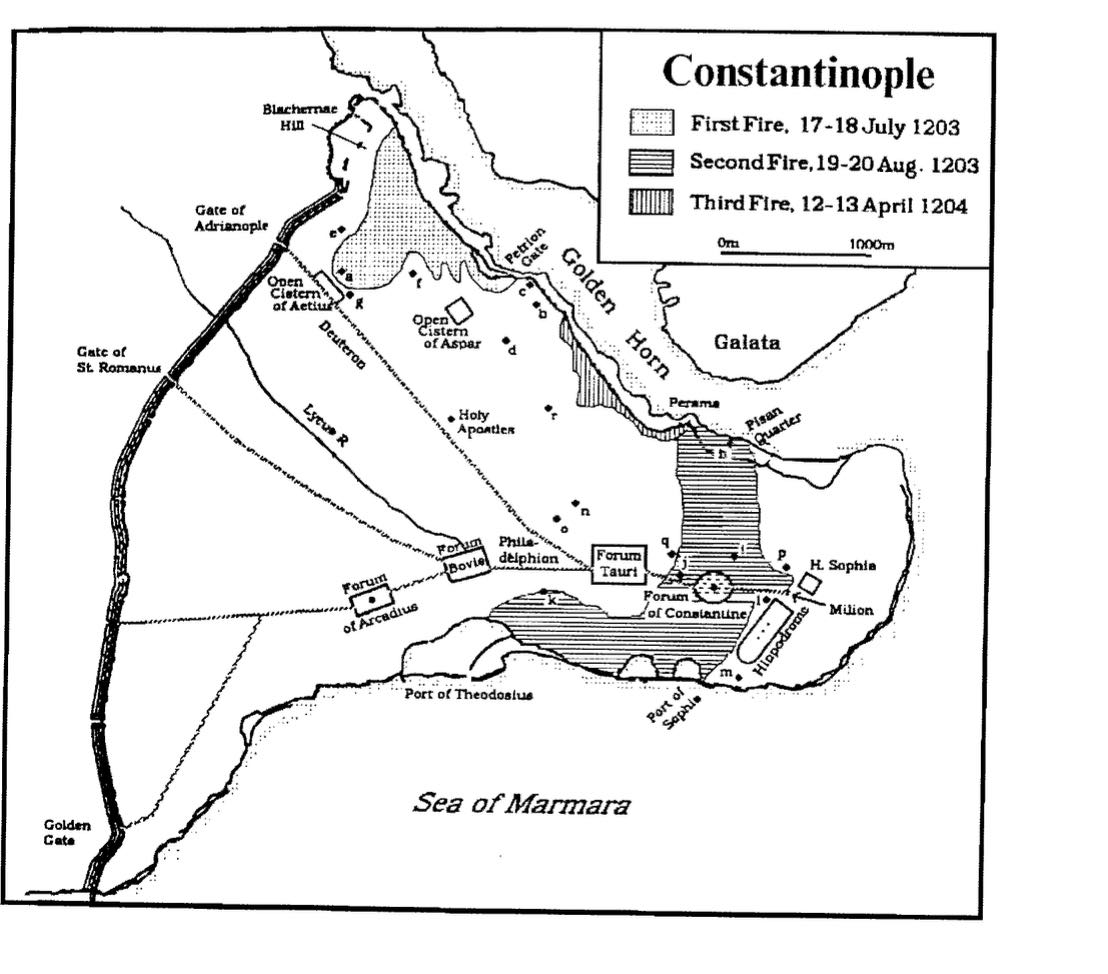
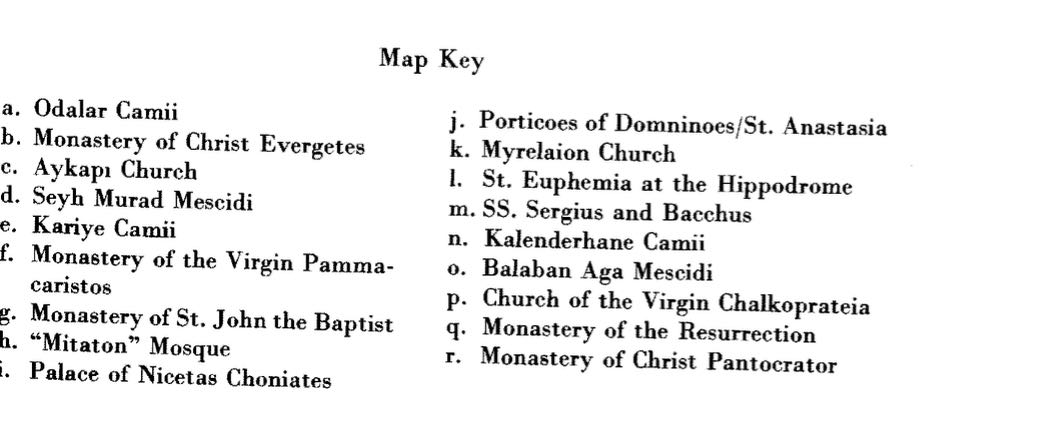
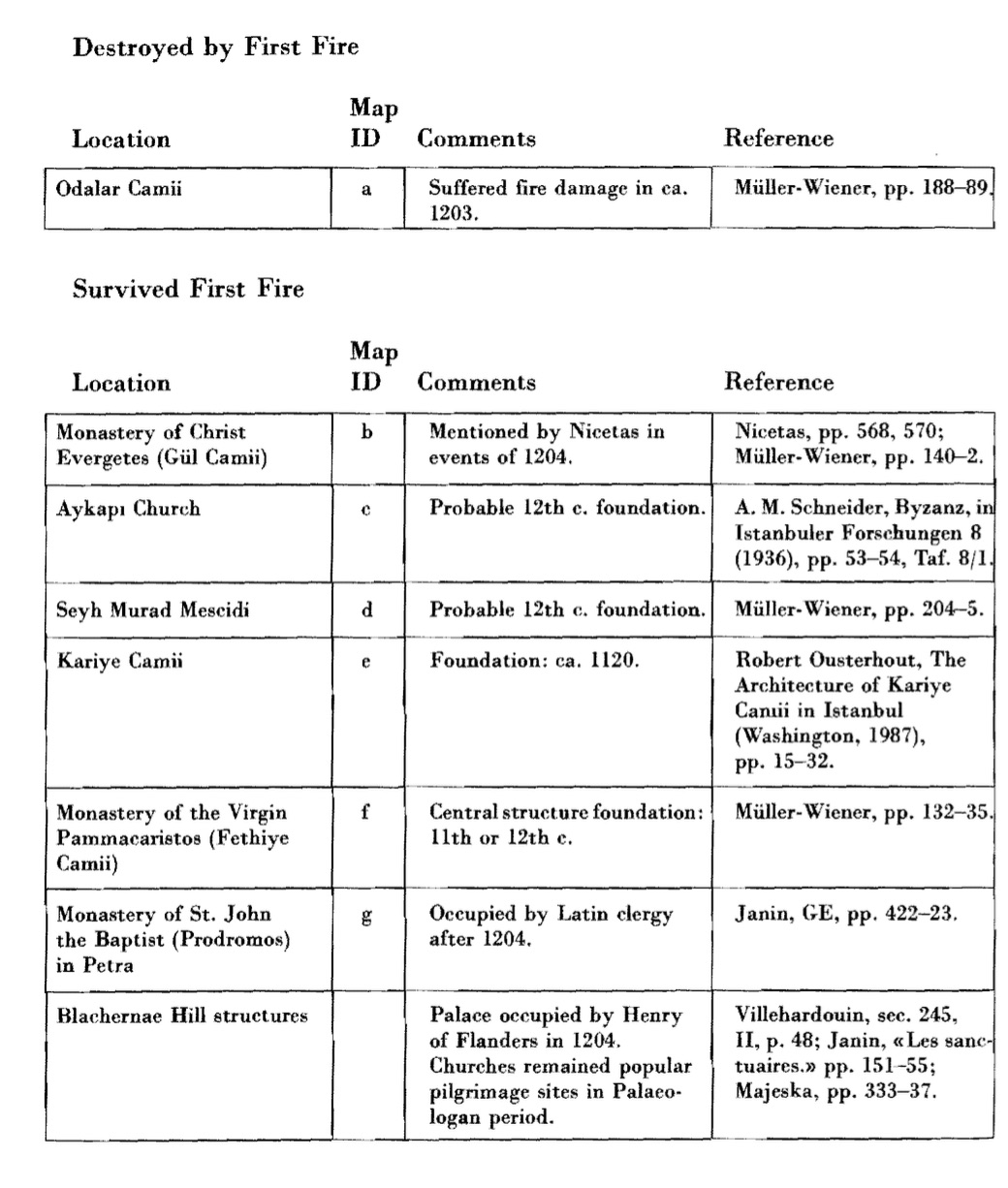
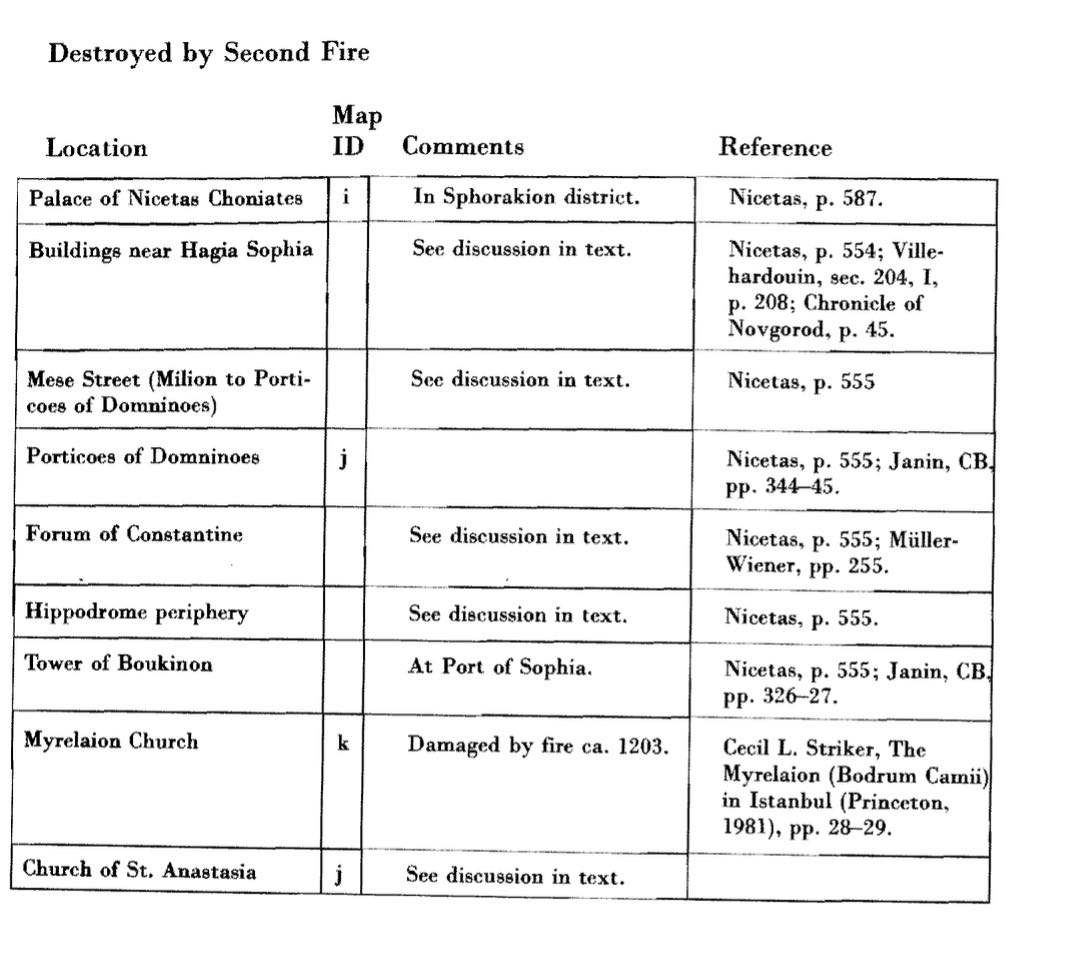
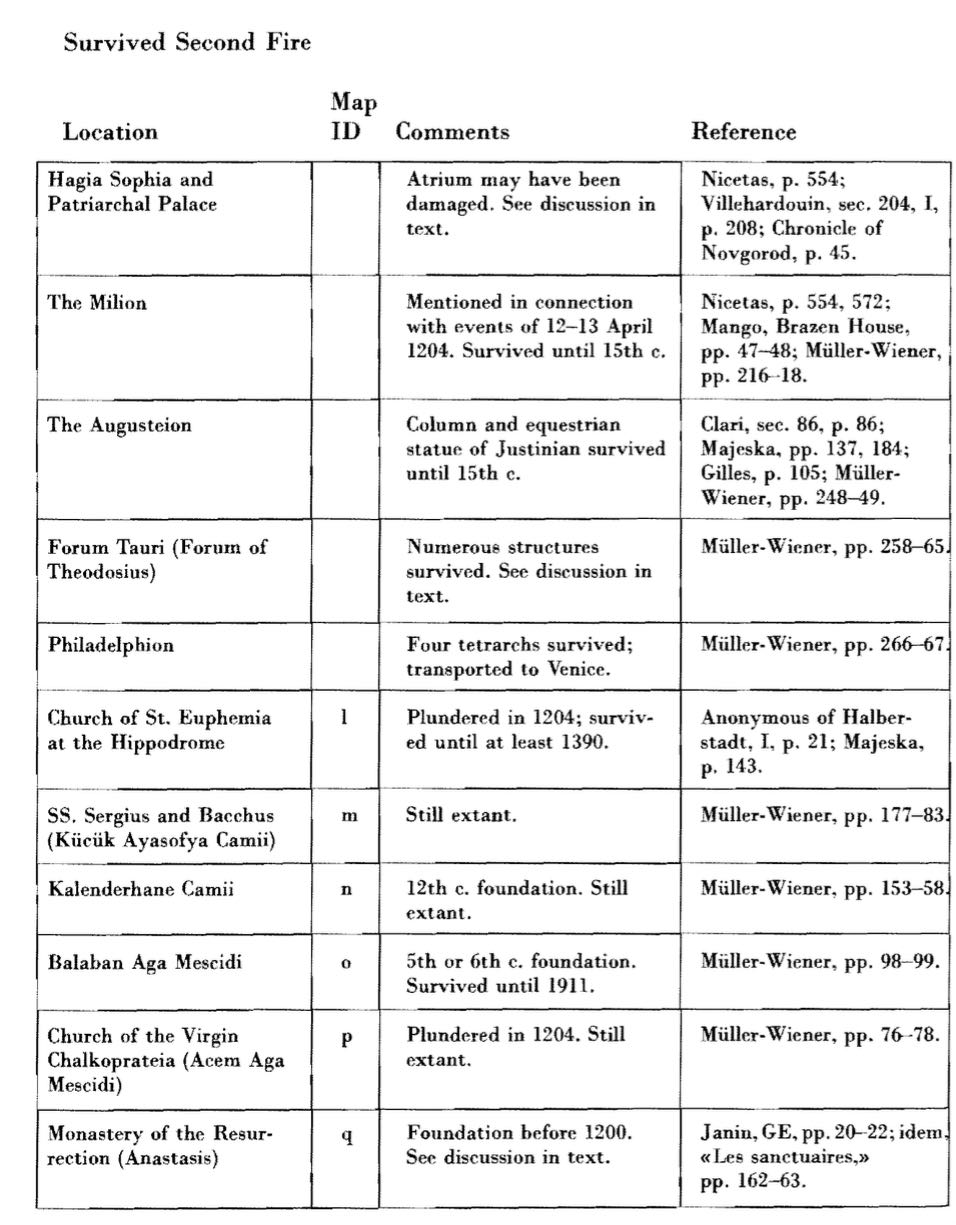
BYZANTINISHE ZEITSCRIFT - 1991-1992
DOWNLOAD THE PDF
The Fires of the Fourth Crusade in Constantinople 1203-1204 by Thomas Madden with footnotes.




 click here for icons of christ
click here for icons of christ click here for icons of the theotokos
click here for icons of the theotokos click here for icons of angels
click here for icons of angels click here for icons of saints
click here for icons of saints








